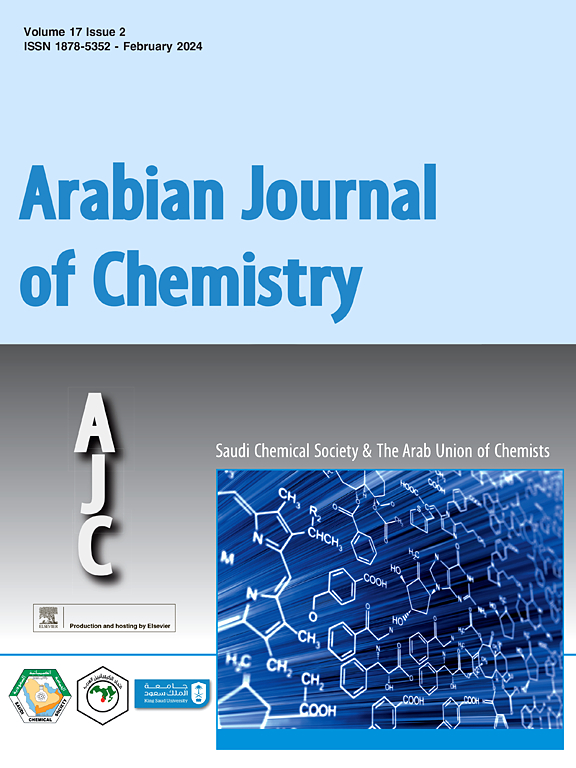Synthesis of Cu-doped Ni-B amorphous alloy catalyst and its catalytic performance for BH4- oxidation
IF 5.2
2区 化学
Q2 CHEMISTRY, MULTIDISCIPLINARY
引用次数: 0
Abstract
Searching for non-precious metal anode catalysts with high catalytic activity and low cost is essential for direct borohydride fuel cells (DBFC). The Ni-B alloys with crystalline states prepared by physical methods commonly exhibit high B content (NiB4, NiB6, etc.). This work first prepared four kinds of amorphous Ni-B alloy with low boron content by the chemical reduction method. The composition of Ni-B alloy is critical to its performance. Cu is doped in the Ni-B alloy in a suitable proportion to improve the catalytic activity further. The crystal structure, microstructure, and composition information of Ni-B and Ni-B-Cu alloys were characterized by X-ray diffraction (XRD), scanning electron microscope (SEM), transmission electron microscope (TEM), selective area electronic diffraction (SAED), X-ray photoelectron spectroscopy (XPS), and inductively coupled plasma-optical emission spectrometer (ICP-OES) tests. The results show that the Ni-B and Ni-B-Cu alloys are amorphous nanoparticles with particle sizes of about 70 and 50 nm, respectively. The electrocatalytic oxidation BH4− performance of Ni-B and Ni-B-Cu was studied by cyclic voltammetry (CV), chronoamperometry (CA), and electrochemical impedance spectroscopy (EIS). It was shown that Ni-B and Ni-B-Cu alloy catalysts have good catalytic activity for BH4− oxidation reaction, and Cu doping improves the catalytic activity of the Ni-B alloy for borohydride oxidation reaction (BOR). In addition, it is found that the maximum power density (79.124 mW·cm−2) of the direct borohydride fuel cell using Ni-B-Cu/NF (NF: nickel foam) as an anode electrode is significantly higher than that of the Ni-B/NF electrode (21.063 mW·cm−2). The Ni-B and Ni-B-Cu alloys with low boron content can be used as potential anode catalyst materials for DBFC.
掺铜 Ni-B 无定形合金催化剂的合成及其对 BH4- 氧化的催化性能
寻找催化活性高、成本低的非贵金属阳极催化剂对于直接硼氢化燃料电池(DBFC)至关重要。通过物理方法制备的结晶态 Ni-B 合金通常具有较高的硼含量(NiB4、NiB6 等)。本研究首先采用化学还原法制备了四种低硼含量的非晶态镍-B 合金。Ni-B 合金的成分对其性能至关重要。在 Ni-B 合金中掺入适当比例的铜可进一步提高催化活性。通过 X 射线衍射 (XRD)、扫描电子显微镜 (SEM)、透射电子显微镜 (TEM)、选择性区域电子衍射 (SAED)、X 射线光电子能谱 (XPS) 和电感耦合等离子体光发射光谱 (ICP-OES) 测试,对 Ni-B 和 Ni-B-Cu 合金的晶体结构、微观结构和成分信息进行了表征。结果表明,Ni-B 和 Ni-B-Cu 合金为无定形纳米颗粒,粒径分别约为 70 纳米和 50 纳米。通过循环伏安法(CV)、计时电流法(CA)和电化学阻抗谱法(EIS)研究了 Ni-B 和 Ni-B-Cu 的电催化氧化 BH4 性能。结果表明,Ni-B 和 Ni-B-Cu 合金催化剂对 BH4 氧化反应具有良好的催化活性,而 Cu 掺杂提高了 Ni-B 合金对硼氢化物氧化反应(BOR)的催化活性。此外,研究还发现,使用 Ni-B-Cu/NF (NF:泡沫镍)作为阳极电极的直接硼氢化燃料电池的最大功率密度(79.124 mW-cm-2)明显高于 Ni-B/NF 电极的最大功率密度(21.063 mW-cm-2)。硼含量较低的 Ni-B 和 Ni-B-Cu 合金可用作 DBFC 的潜在阳极催化剂材料。
本文章由计算机程序翻译,如有差异,请以英文原文为准。
求助全文
约1分钟内获得全文
求助全文
来源期刊

Arabian Journal of Chemistry
CHEMISTRY, MULTIDISCIPLINARY-
CiteScore
10.80
自引率
3.30%
发文量
763
审稿时长
63 days
期刊介绍:
The Arabian Journal of Chemistry is an English language, peer-reviewed scholarly publication in the area of chemistry. The Arabian Journal of Chemistry publishes original papers, reviews and short reports on, but not limited to: inorganic, physical, organic, analytical and biochemistry.
The Arabian Journal of Chemistry is issued by the Arab Union of Chemists and is published by King Saud University together with the Saudi Chemical Society in collaboration with Elsevier and is edited by an international group of eminent researchers.
 求助内容:
求助内容: 应助结果提醒方式:
应助结果提醒方式:


